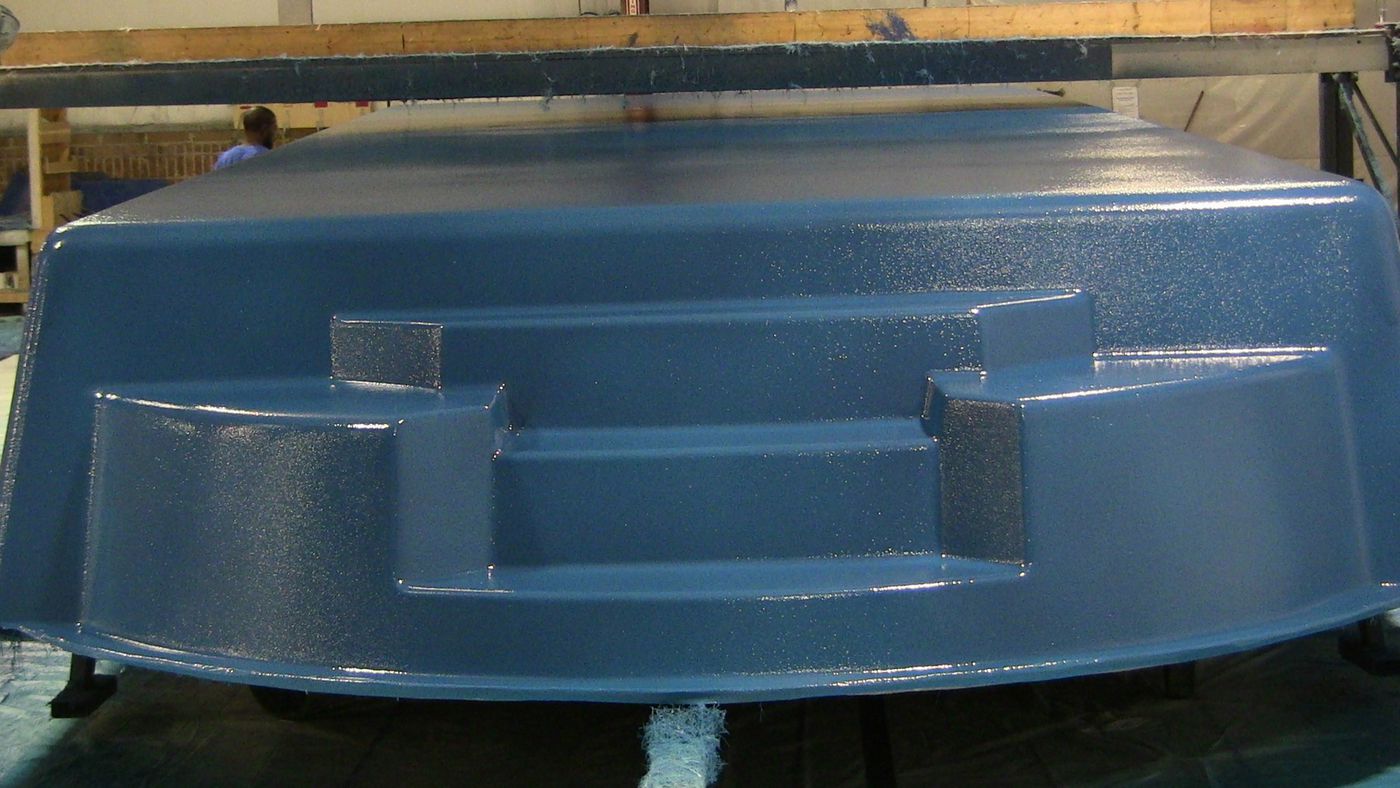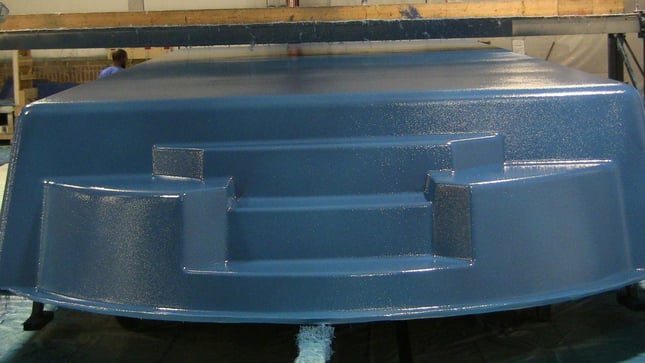
Can Water Behind a Fiberglass Pool Cause Osmotic Blisters?
If you are looking for information about how fiberglass pools are manufactured, you have come to the right place today!
Being a manufacturer of fiberglass pools, we receive lots of questions on a daily basis about the materials we use, how they are applied, and how they perform in the field.
In this article, we'll address some questions about gelcoat blisters to give you a better understanding of how it happens, why it happens, and what can be done to prevent it.

Common Questions Regarding Gelcoat Blisters on Fiberglass Pools:
What Causes Osmotic Blisters on Fiberglass Pools?
Basically, microscopic water molecules pass through the gelcoat surface of the pool. If they are allowed to come in contact with the glass fibers, a chemical reaction will occur that produces a gas. This gas exerts outward force on the gelcoat and causes what we call an osmotic blister.
How Common Are Osmotic Blisters on Fiberglass Pools?
It really depends on the manufacturer of the pool.
Before we at River Pools started manufacturing our own pools, we installed roughly 1,000 fiberglass pools manufactured by other companies.
In a nutshell, we have not seen osmotic blisters on the pools that were produced using modern gelcoats and high grade resins, but we have seen a handful of pools with osmotic blisters over the years.
What Does River Pools Do to Prevent Osmotic Blisters?
The layer behind the gelcoat surface of the pool has the important role of blister prevention.
The traditional method is to apply chopped fiberglass with vinyl ester resin, which is specially formulated to prevent water from penetrating into the laminate layers behind it.
This Vinyl Ester (VE) chop combination has proven to dramatically reduce (or in most cases eliminate) blistering so long as the correct resin and application is employed. (It's important to note that all vinyl ester resins are not created equal.)
However, there is a superior system that not only outperforms the VE chop model in terms of blister prevention but has some other distinct advantages as well. We call it our Vinyl Ester Barrier Coat and it is the second layer of The River Pools Way: Advanced Manufacturing.
It is unique in that it does not contain glass fibers, and therefore virtually eliminates the possibility of water contacting the glass. However, a common misconception is that our Vinyl Ester Barrier Coat is simply the same resin used by others minus the glass. This is certainly not the case as it has an entirely different chemistry and frankly is nearly double the cost. To explore this in depth, learn about the other advantages of our Barrier Coat.
Learn how we manufacture fiberglass pools, step by step, and how our methods revolutionized the industry.

Finally, when doing your research it's not uncommon to find that other manufacturers refer to their Vinyl Ester layer as a "Barrier Coat." If you really want to compare apples-to-apples, simply find out if it contains chopped fiberglass and that will allow you to make the distinction.
Is It Possible for Water to Penetrate Through from the Backside of the Pool and Cause the Gelcoat Surface to Blister?
Just to elaborate - the first question is actually, "Is it possible for water to penetrate into the laminate from the backside of the pool?" Yes, that is possible. The next question becomes, "what happens when the water contacts the layer of vinyl ester blister protection?"
If water were to permeate through and contact our Vinyl Ester Barrier Coat from the backside, it would essentially hit an impermeable wall and follow the path of least resistance and exit the same way it entered...through the backside of the pool. The same holds true for any gas that may be produced: it would leave out of the backside of the pool.
Theoretically, in an instance with the VE chop combo, if water were to contact any fibers that were not completely saturated with resin, the water could "wick" through the glass and cause issues.
This is why we feel that our Vinyl Ester Barrier Coat not only outperforms a VE chop layer in terms of its chemistry, but also in terms of its application.
Again, a VE chop layer is a proven method to prevent blisters, but our philosophy is simply to embrace the most advanced technology available to us at this time, and consequently produce the best pool possible that will serve your family for many years to come.
At River Pools, we manufacture and install world-class fiberglass pools for customers across North America. Take a look at our catalog of models or view our gallery to see what we can do for your inground pool project.
Wondering how much a high-quality fiberglass pool would cost? Try out our fiberglass pool pricing calculator or request a quote for the most accurate estimate.
As always, please feel free to leave questions or comments below.
If you're still in the process of searching for the right inground pool type for your home, be sure to download our free ebook below which provides a full comparison of the three main inground pool options.
Up Next:
The River Pools Way: Fiberglass Pool Installation Problems Solved
Is Sand or Stone Better Backfill for an Inground Fiberglass Pool?
Editor's note: This blog article was updated on April 8, 2019.




